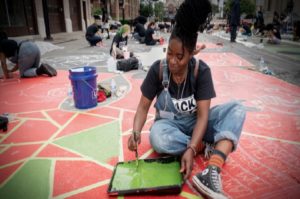Philanthropy and BIPOC Communities
The story of BIPOC donors has rarely been told and race is a defining factor when looking at which organizations and issues get funded and how much they receive. The nation, having been built on anti-Black racism and genocide against Indigenous people, still has work to do in overturning the harmful structure created. Our education, taxes, housing, policing, voting, environmental protection, and nearly every other system still has the damaging racism woven through them. For the naysayers, one simply needs to ponder who the laws, markets, and governments were designed for. It was the very people who were ruling over those whom they deemed disposable for hundreds of years. This reality frames the many ways the United States is failing where some of our peer nations are succeeding.
One way some nonprofits are aiming to change these inequities is garner support of high network individuals of color. Research shows 80 percent of funding goes to white-led organizations with only 20 percent given to BIPOC-led organizations leading to a gross inequity that philanthropy has a responsibility to fix. Fresh off an anniversary of their world-changing climate justice campaign (which aims to shift hundreds of millions in new resources to BIPOC-led organizations), a comprehensive report from Donors of Color Network was released. The mission of DOCN has been to shift the center of gravity in philanthropy towards racial and social justice. The report, co-authored by Hali Lee of Radiant Strategies, Urvashi Vaid of Vaid Group, and Ashindi Maxton of Donors of Color Network, is meant to be a resource and call to action that pushes philanthropy to address the most pressing issues equitably.
The report painted a portrait of a historically overlooked demographic and featured fascinating data from interviews of over a hundred high net worth BIPOC donors from across the country. I could read how much effort went into researching the impact and changes these donors are hoping to shift. Here was something that struck me as a big reason to encourage more BIPOC donors: they are the ones who have lived through the experiences—or come out of the communities where the life experiences speak to the needs of the marginalized. Most of the nonprofits who are following this change are seeing this same benefit. They feel that high net worth donors of color are a powerful and emerging community interested in making an impact to advance opportunity and equity. They deepen the understanding of philanthropy in this country.
Here’s a meaningful experience that I read and wouldn’t have guessed the impact of having BIPOC donors involved. When Margarette Purvis started as chief executive of the Food Bank for New York City back in 2011, she embarked on a listening tour of the food pantries and soup kitchens her charity supports. She quickly got an earful from leaders and volunteers who felt comfortable sharing their thoughts with her. One case she remembered was how offended some volunteers and homeless individuals felt by a food-bank appeal that featured an image of an older white man and the words “Don’t make me beg.” These posters were hanging up around food banks.
The staff members and volunteers she met—many of whom, like Purvis, are women of color—told her how many felt alienated by the campaign. Their complaints all had one central question, Purvis says. “So is it OK for some people to beg, just not someone who looks like him?” This reminded her that too often fundraisers have only white people in mind when they make a pitch, turning off other potential supporters as well as disaffecting a charity’s workforce. “When people have one idea of what a donor looks like, you’re not always thinking about how all donors could think about a message,” she said. Purvis said she wanted her colleagues to ask reviewers, “How clear was this?” “After reading this, do you feel that you now understand not only what we’re talking about, but also what we’re asking you to do?” And most importantly, she wants them to ask, “Did the food bank achieve its goal of putting dignity ‘at the heart of everything?’”
Since most philanthropic organizations are white led, it has resulted in stark disparities in funding and biases which remain unchecked. It’s vital for donors of color to get involved to cause a transformational change in philanthropy. While philanthropy is composed of many organizations committed to redressing systemic harms, it is also home to donors and activists who embrace white supremacy, market fundamentalism, climate-change denial, and inequitable treatment of women, LGBTQ people, and immigrants. While many nonprofit and philanthropic organizations care about equity, many do not. This is a reality that is often overlooked. The time for action and change in philanthropy is now. Donors of color stories deserve to be told and we need transparency around them. Their work is how we drive systems to change. I conclude with admonishment from Dr. Martin Luther King Jr. which applies perfectly to nonprofits and foundations today.
King once said, “Shallow understanding from people of good will is more frustrating than absolute misunderstanding from people of ill will. Lukewarm acceptance is much more bewildering than outright rejection.” It’s shameful to admit it, but until white-led philanthropy and nonprofits think as King did, real change is not possible. Hopefully having BIPOC donors in those previously white led organizations and spaces helps to bring about understanding, acceptance, and change.


